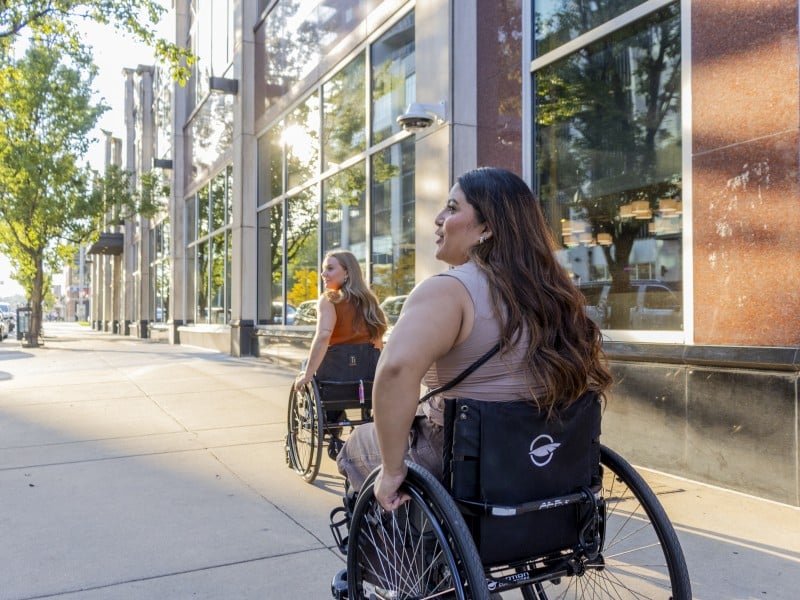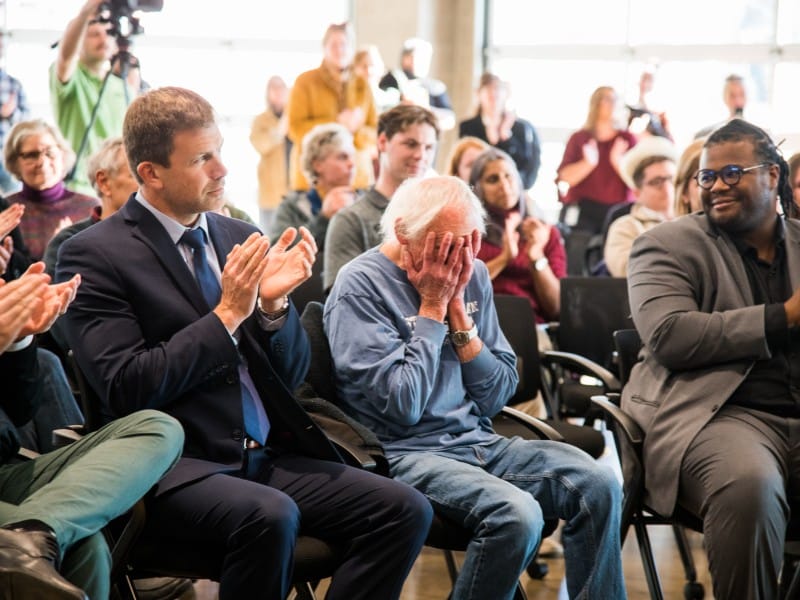Reducing medical debt church by church
RIP Medical Debt was established to pay off medical debt for millions of people in the United States and it has a goal to wipe out $4 million in Michigan medical debt by November.

Editor’s note: This story is part of Southwest Michigan Second Wave’s On the Ground Battle Creek series.
Most of the Sunday services at the 146 United Church of Christ congregations in Michigan, including one in Battle Creek, have been including a second collection. The funds go to help pay off medical debts throughout the state for individuals that the congregation will never meet, says Rev. Dr. Diane Baker, Senior Pastor of Bethel United Church of Christ in Waterford.
The statewide initiative is the focus of a nationwide campaign known as RIP Medical Debt which was established to pay off medical debt for millions of people in the United States.
Baker says the Michigan campaign has a goal to wipe out $4 million in medical debt by November. About 10 percent of that goal has been reached.
“With every dollar collected it wipes out $100 in medical debt,” she says. “The goal we have with churches, friends and family is $40,000. Doing the math if every UCC church in Michigan could raise $275 on average, we could wipe out that $4 million by raising $40,000.”
About $3 million of the debt in Michigan’s RIP Medical Debt portfolio is concentrated in Wayne County, Baker says.
The nonprofit debt erasure organization was founded in 2014 by two debt collection executives, Craig Antico and Jerry Ashton, who saw the potential for helping out in this way to help people get out from under the burden of debt.
Over the course of decades in the debt-buying industry, Antico and Ashton met with thousands of Americans saddled with unpaid and un-payable medical debt and realized they were uniquely qualified to help these people in need, says an article on their website.
“They used their expertise and compassion to create a unique way to forgive medical debt: they would use donations to buy large bundles of medical debt and then forgive that debt with no tax consequences to donors or recipients. From this idea came RIP Medical Debt, a New York-based 501(C)(3). The results have been spectacular — $2,689,616,823 in medical debts eradicated so far, providing financial relief for over 1,819,000 individuals and families,” the article says.
Baker says her church looked into the possibility of getting involved five years ago and made a commitment to take it on for the entire state in the spring.
Letters were sent out to UCC pastors and Baker spoke with them directly to answer any questions they had. She also asked them to ask their congregations to speak with three friends, family members, or businesses as a way to spread the word and increase donations.
Pastor Nate Craddock with First Congregational Church in Battle Creek was among the clergy she contacted. He says he wanted to be involved because he recognizes the potential that the program has to help people in need.
“Essentially, it does come to back to the misson of the church and one of the important ways is not just that we are helping people but also that we are building communities and coalitions across lines and distances to do things we would not be otherwise able to do,” he says. “In our system, we covenant to partner together with other churches in our denomination to do things like this. The driver here is the ability to put our money where our mouth is and use that accumulated wealth. We’re constantly trying to live in Jesus’ instructions to give all you have and help the poor.”
For herself, Baker says her church “thought that this would be a wonderful way to respond to the needs Michiganders have at this time.”
Simple, but impactful
RIP Medical Debt steps in after their representatives contact secondary collection sources such as agencies to see if they are willing to work with them.
If individuals are delinquent in paying their bills for lengthy periods of time, healthcare providers will generally turn the collection process over to collection agencies.
“They can only try to knock on the door for so long as they do and that’s when RIP, and organizations like it, are looking pretty good at this point,” Baker says. “RIP negotiates how much they’re going to give on the dollar for debt and the collection agencies take that amount from them. If RIP says they can pay $100, collection agencies think that’s better than nothing.”
Individuals are informed that their medical debt has been eliminated through a letter they receive in a plain yellow envelope. They also are informed of services RIP can provide them free of charge to help them re-establish their credit rating.
According to RIP’s website, 66 percent of all bankruptcies in the U.S. are tied to medical debt, and about 23 million people in the U.S. account for an estimated $195 billion in medical debt. Their research also says that one in four adults must choose between paying their medical bills or covering basic needs and 50 percent of all adults delay medical care due to the high cost.
Baker says among People of Color and low-income individuals that delay in medical care impacts six out every 10 individuals.
As a result of inequities in wealth, occupation, income, insurance coverage, and access to care, people of color are more likely to have medical debt in collections. This is in line with research showing that communities of color have higher rates of consumer debt in collections than predominantly white communities, says a Consumer Financial Bureau Protection report titled “Medical Debt Burden in the United States.”
“Lower wealth and incomes mean that people of color are less able to pay unexpected and/or high-balance medical bills: in 2016, the median Black household had a net worth of $17,100 and the median Hispanic household had a net worth of $20,765, compared with $171,000 for the median white household,” the report says. “Occupational disparities mean that Black, Hispanic, and Native American individuals have less access to health insurance through the workplace. In 2018, 28 percent of Native American/Alaskan Native adults were uninsured, 22 percent of Hispanic/Latino adults were uninsured, and 12 percent of Black adults were uninsured compared to 9 percent of white adults and 7 percent of Asian adults. Data from the first half of 2021 suggests that Black and Hispanic adults have continued to experience elevated uninsured rates during the pandemic.”
While it is easy to become overwhelmed by these disparities, Baker says there has to be a starting point which for her is the work of RIP Medical Debt.
“It is a really wonderful program, especially for the people who are going to benefit from this. There are so many references in Scripture about helping the poor and this all fits with our mission,” she says. “This is love in action.”
Baker says she would like to see other denominations get involved with RIP.
“This is a way we can have compassion, through our love in action, speaking up to our Congressional representatives and being able to identify these systemic factors that keep people from accessing good medical care and accessing ways to spread those payments out over time or erasing their debt,” she says.
“There’s a synergy in creating new ideas to address these very complex problems. How can we address these systemic issues through our connections and joining together? As we strengthen our connections, regardless of denomination and faith, there can be such power for change, knowing that we can make such a big difference for our neighbors.”














